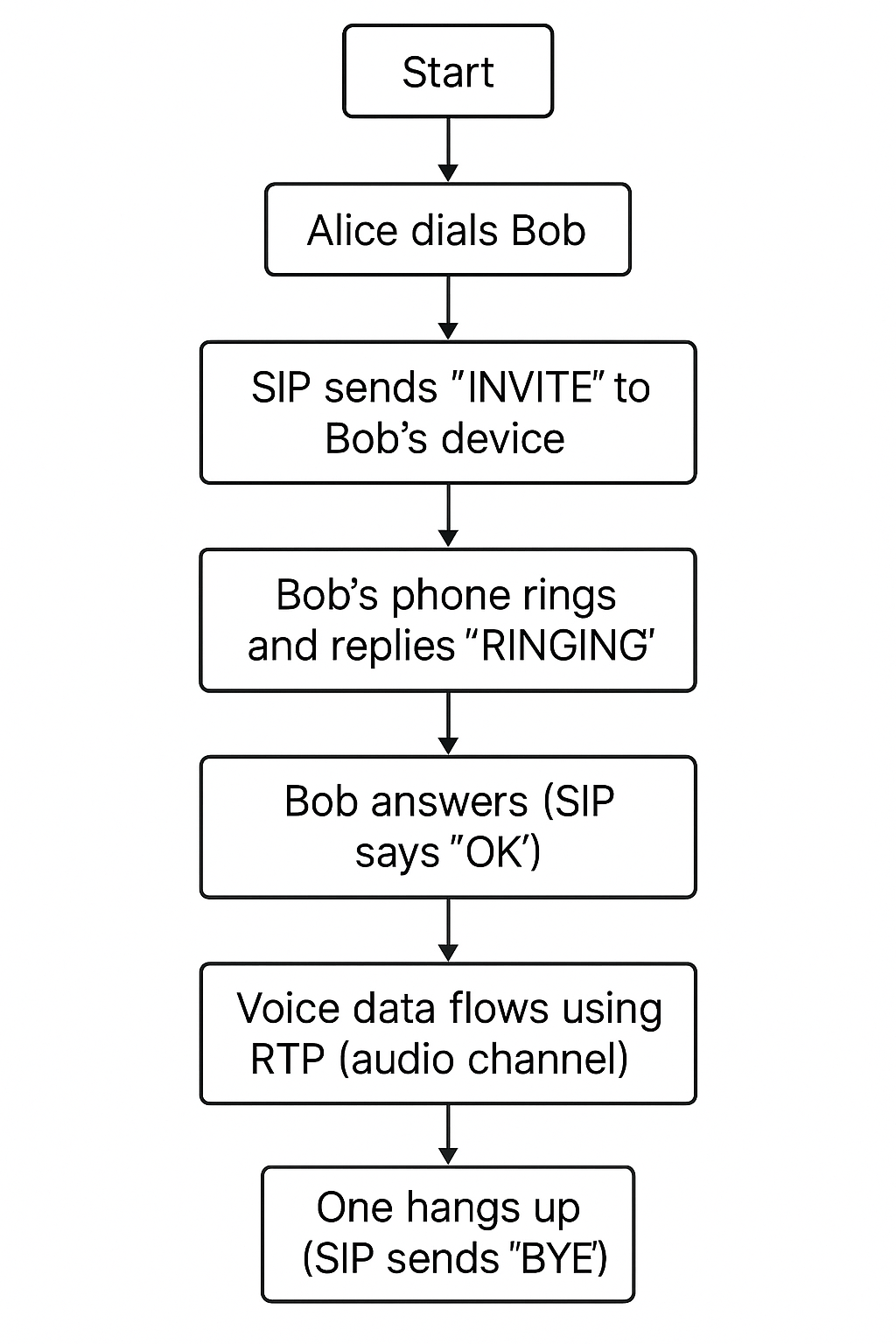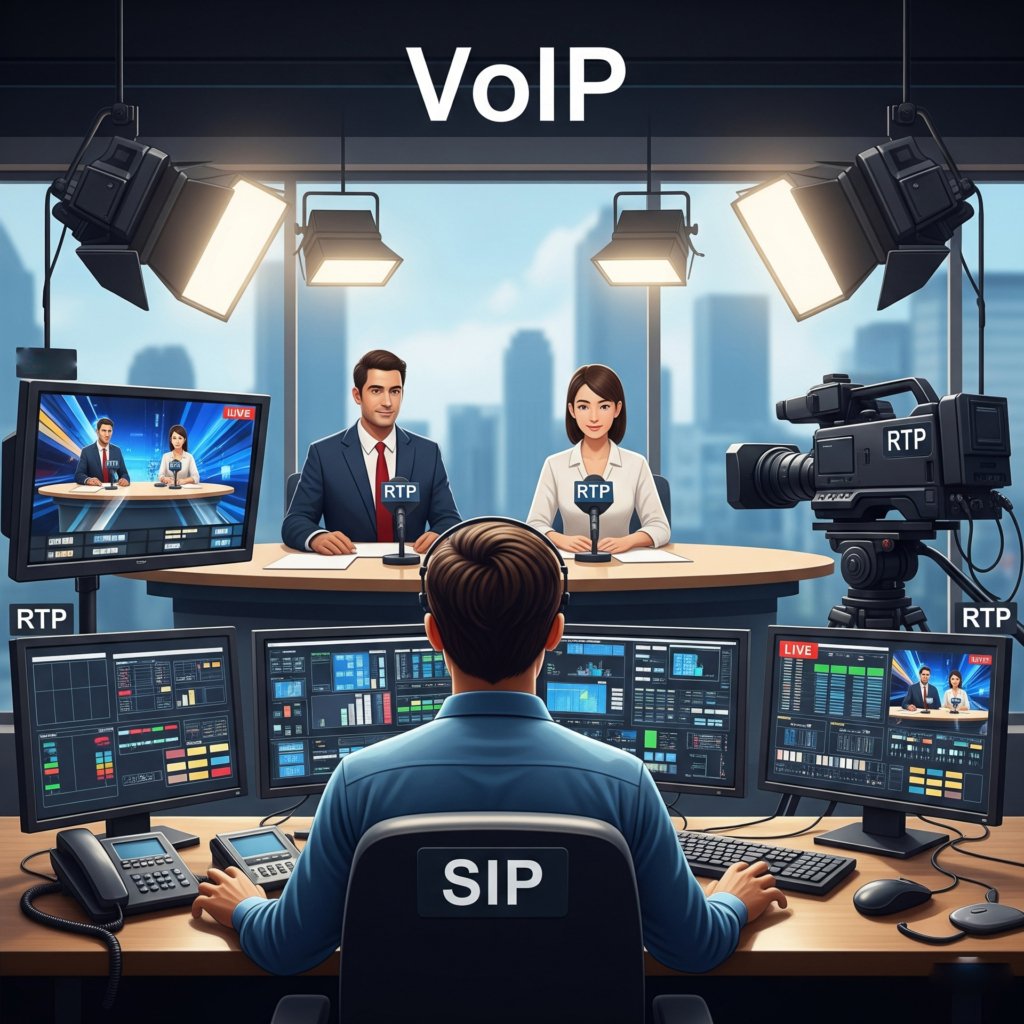How VoIP SIP Works: A Simple Guide for Everyone
Introduction: Talking Over the Internet
Have you ever made a call using WhatsApp, Zoom, or Skype? If yes, then you’ve already used a form of VoIP (Voice over Internet Protocol). But behind many of these calls, there’s a powerful technology called SIP (Session Initiation Protocol).
In this blog, we’ll explain VoIP SIP in simple language, using examples and flowcharts so anyone can understand it.
What Is VoIP?
VoIP stands for Voice over Internet Protocol. In simple terms: “VoIP lets you make voice calls using the internet instead of traditional telephone lines.”
What Is SIP?
SIP stands for Session Initiation Protocol. It’s like a telephone operator, but digital: “SIP sets up, manages and disconnects voice or video calls over the internet.” It manages multimedia sessions between two end points.
Think of SIP as the person who:
- Starts the call
- Keeps it going
- Ends it when you’re done
An Everyday Example: Alice Calls Bob
Let’s say Alice wants to call Bob using a VoIP phone.
Here’s what happens step-by-step:

What is RTP (Real-time Transport Protocol)?
RTP is the protocol used to carry the actual voice (or video) during a VoIP call.
Think of SIP as the call organizer (sets up and ends the call), while RTP is the delivery truck that transports your voice during the call.
Let’s understand the relationship between VoIP, SIP and RTP using a simple analogy.
Alice Interviews Bob on a Live Show
Let’s walk through the sequence:
🎬 VoIP is the show platform that makes everything possible.
VoIP is the overall system — like the entire talk show production that allows people to talk and listen live over the internet. It includes everything: the camera crew, stage, broadcast, communication tools — the infrastructure that lets people hear and see each other remotely.
🧑💼 SIP (the director) calls Bob and Alice to the virtual stage.
📣 SIP gets confirmation from both. “OK, we’re live!”
SIP is the behind-the-scenes director. It sets up the call, coordinates the actors (phones), cues them to start talking, and wraps up the show. SIP is the control room: it organizes the show but doesn’t appear on camera.
🎙️ RTP (microphones + live feed) transmits their voices as they talk.
RTP is what actually carries the voices and sounds live to the audience — just like the microphones and live stream that send the sound to viewers in real time.
📴 When done, SIP says, “Cut! End the call.”
🎬 VoIP wraps the whole thing together.

Additional Notes:
What is PBX (Private Branch Exchange)?
PBX is a private phone system used by businesses to manage internal and external calls. Instead of every employee having a separate phone line to the telephone company, a PBX connects all phones inside an office and decides how to route each call.